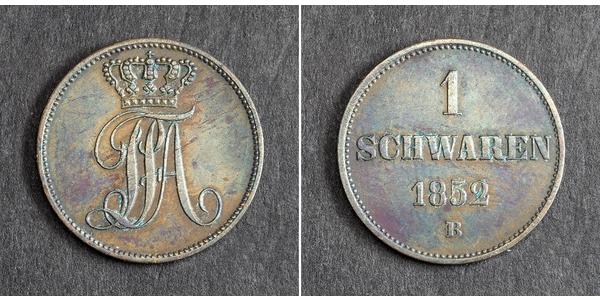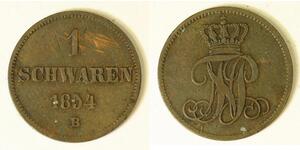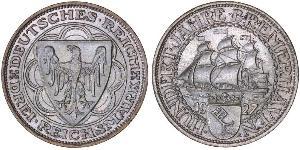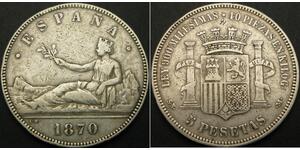1 Schwaren (продана за $6.0)
Mint Year: 1852 Condition: Toned XF! References: KM-185 ($25 in XF!). Denomination: 1 Schwaren (3 Light Pfennig) Material: Copper Diameter: 16mm Weight: 1.31gm
The House of Oldenburg is a European royal house of North German origin. It is one of Europe's most influential royal houses with branches that rule or have ruled in Denmark, Iceland, Greece, Norway, Russia, Sweden, Schleswig, Holstein, and Oldenburg. The current Queen of Denmark, the King of Norway and the former King of Greece, as well as the consorts of Greece and the United Kingdom and the first seventeen names in the line of succession to the British throne, all belong to this house. It rose to prominence when Count Christian I of Oldenburg was elected King of Denmark in 1448, of Norway in 1450 and of Sweden in 1457. The house has occupied the Danish throne ever since. Marriages of medieval counts of Oldenburg had paved the way for their heirs to become kings of various Scandinavian kingdoms. Through marriage with a descendant of King Valdemar I of Sweden and of King Eric IV of Denmark, a claim to Sweden and Denmark was staked, since 1350. At that time, its competitors were the successors of Margaret I of Denmark. In the 15th century, the Oldenburg heir of that claim married Hedwig of Schauenburg, a descendant of Euphemia of Sweden and Norway and also a descendant of Eric V of Denmark and Abel of Denmark. Since descendants better situated in genealogical charts died out, their son Christian (the abovementioned) became the king of all three kingdoms of the whole Kalmar Union. The House of Mecklenburg was its chief competitor regarding the Northern thrones, and other aspirants included the Duke of Lauenburg. Different Oldenburgine branches have reigned in several countries. The House of Oldenburg was briefly poised to claim the British thrones through the marriage of Queen Anne and Prince George of Denmark and Norway; however, due to the early deaths of all their children, the crown passed to the House of Hanover.
Augustus (13 July 1783 – 27 February 1853) was the reigning Grand Duke of Oldenburg from 1829 to 1853.
Augustus succeeded his father, Grand Duke Peter I, to the throne of Oldenburg, and the Principality of Birkenfeld on 21 May 1829. Unlike his father, Augustus assumed the title of Grand Duke, and Augustus was thus the first to use the title Grand Duke of Oldenburg.
As Grand Duke, Augustus was employed in reforming the administration of his small state and showed himself a patriarchal ruler who cared for agriculture, transport, social welfare, art and science. Trade flourished along the lower Weser and Jade, and the city of Oldenburg developed into one of Northwestern Germany's cultural centres.
The Grand Duke however was reluctant to follow popular demands to introduce a constitution for the Grand Duchy. Although article 13 of the constitution of the German Confederation obliged Oldenburg to have a constitution, following the advice of his Russian relatives, the Grand Duke again and again postponed the promise of a constitution given in 1830.
Only as a consequence of the Revolutions of 1848 did the Grand Duke reluctantly give in under pressure from his advisers. On 18 February 1849, he signed the Oldenburg constitution which had already been revised by 1852.

|
Добавил:
anonymous 2021-02-03 |
|
||
|
||
|
||
5 Песета Первая Испанская Республика (1873 - 1874) Серебро
в группе 38 монет / 33 цен
⇑




 Deutsch
Deutsch Русский
Русский Українська
Українська English
English Italiano
Italiano Français
Français Español
Español 汉语
汉语





-300-150-DTwKX9ISLbYAAAFanYlMgKms.jpg)







